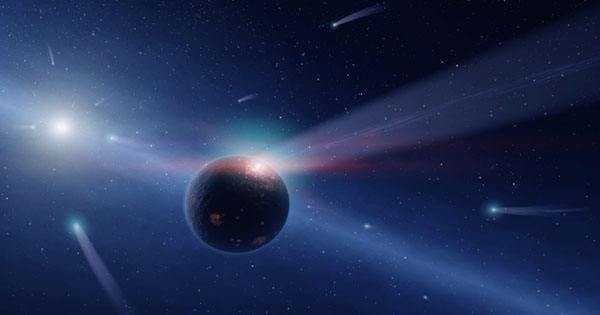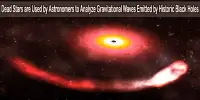A gravitational lens is a phenomenon in which the gravitational field of a massive object, such as a galaxy or a cluster of galaxies, bends light from a more distant object, such as a quasar or another galaxy, as it passes through the gravitational field. A gravitational lens is matter, such as a cluster of galaxies or a point particle, that bends light from a distant source as it travels toward an observer. This bending of light can act as a lens, magnifying or distorting the appearance of the background object.
Gravitational lensing is based on Albert Einstein’s general theory of relativity, which describes how mass and energy in the universe influence the fabric of spacetime. The path of light is curved when it passes through a region of spacetime with a strong gravitational field. This effect is similar to how light is refracted in optics when it passes through a lens, hence the term “gravitational lens.”
Albert Einstein’s general theory of relativity describes the amount of gravitational lensing with far greater precision than Newtonian physics, which treats light as corpuscles traveling at the speed of light.
The effect was first discussed in print by Orest Khvolson (1924) and Frantisek Link (1936), but it is most commonly associated with Einstein, who made unpublished calculations on it in 1912 and published an article on the subject in 1936. Fritz Zwicky proposed in 1937 that galaxy clusters could act as gravitational lenses, which was confirmed in 1979 by the observation of the Twin QSO SBS 0957+561.
There are several types of gravitational lensing:
- Strong Lensing: This occurs when the gravitational field is strong enough to produce multiple, distorted images of the background object. The most famous example of strong lensing is the Einstein ring, where the light from a distant object is bent into a ring-like shape around a massive foreground object.
- Weak Lensing: In this case, the gravitational field is not strong enough to create multiple distinct images, but it still causes a measurable distortion in the shape of the background object.
- Microlensing: Smaller objects, such as individual stars, act as gravitational lenses, causing this. As the lensing object passes in front of the background star, its brightness may temporarily increase.
Gravitational lensing has evolved into an important tool in astrophysics and cosmology. It enables astronomers to investigate the distribution of dark matter in the universe, estimate the masses of distant objects, and even learn more about the nature of the universe’s accelerating expansion. It has also been used to identify and study objects that would otherwise be too dim to see directly.
















